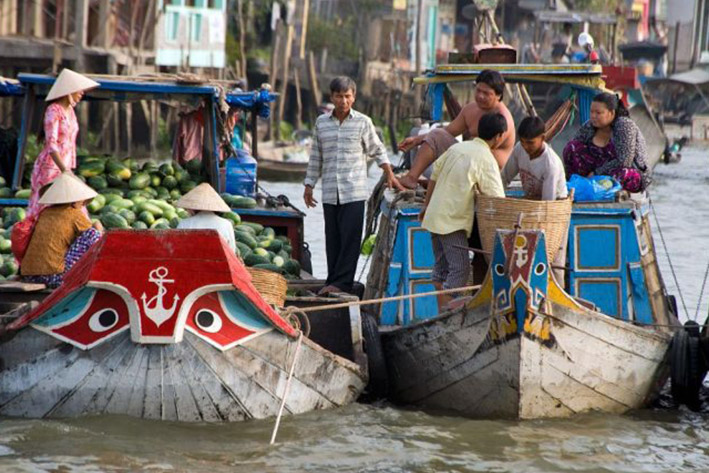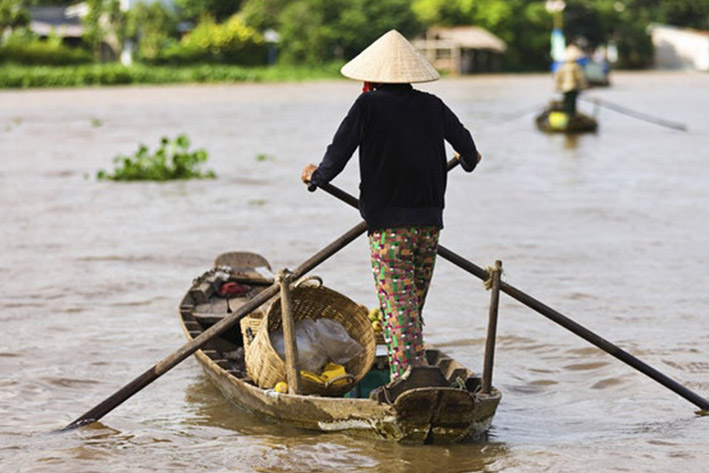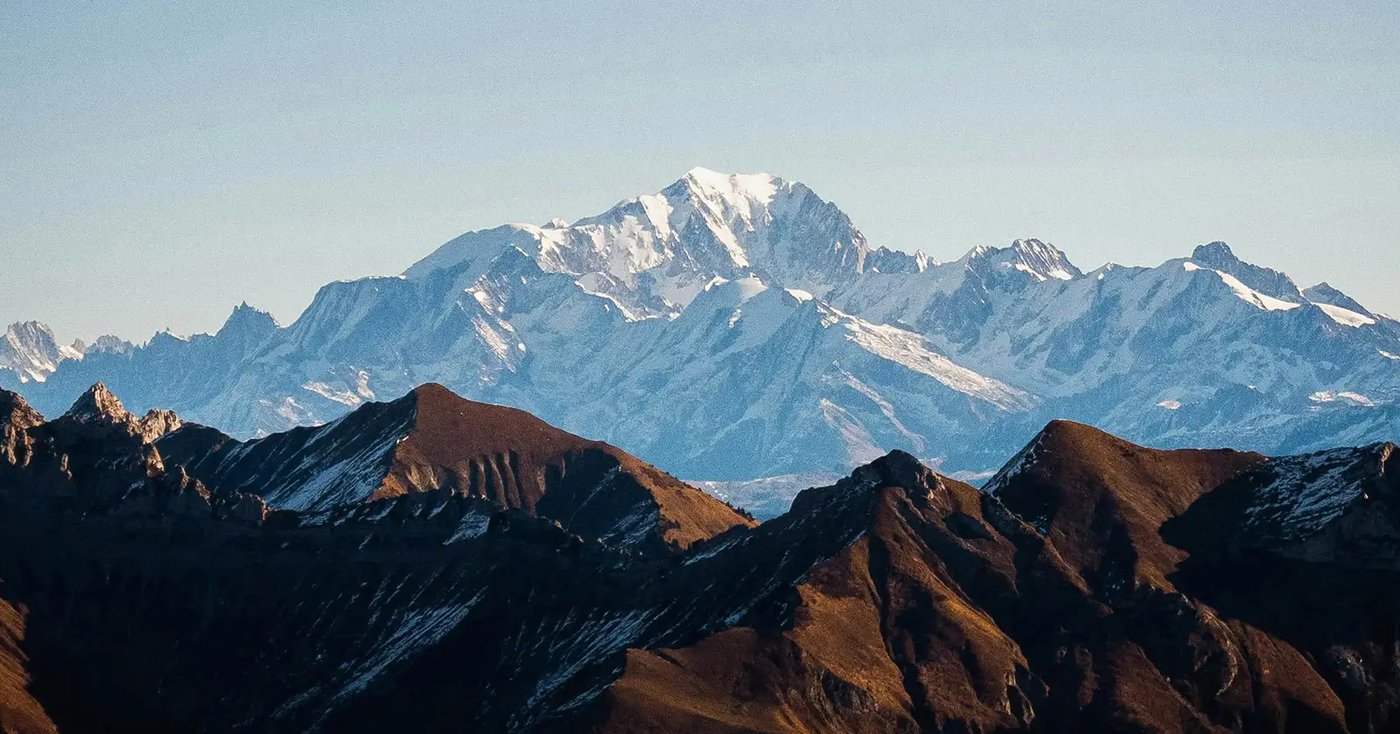The Middle East has its Bedouins and African the bushmen and the San, but the Mekong also has its nomads. As the river rises and falls with each season, the river dwellers of Cambodia move their homes to match the tides. When the water is at its lowest during the winter months they build and float timber homes on the river, then when the monsoon rains come, they dismantle or leave these homes behind and seek higher ground, where their homes on stilts are waiting for them. In the drier months, these homes can be seen like Star Wars AT-AT robots towering over the countryside. But when the Mekong River bursts its banks and the water rises by several metres, these lofty abodes will help protect them from the full force of nature.
They have lived like this for centuries. These Mekong nomads eat, sleep, work and even farm on the water. While these floating villages look like a haphazard array of colourful lean-tos, each village is a bustling hive of industry. If they are not farming catfish or crocodiles from their watery allotments that are attached to their homes, they are turning to the Mekong for their livelihood.
Some nomads place their homes in the middle of the river for a month and catch the fish in large dragnets while they swim past, when others will pilot their palm-tree boats in the dark along the waterway to find their nets on Tonle Sap lake.
After they have hauled in their catch, they will then travel down the river to Chnnok Tru’s fishmarket, where fishing families can be found crouched ankle deep in red clay mud on the riverbank, as they deftly descale and gut each fish for market. Both young and old gut the fish. Hiding from the sun under large brimmed hats, the women laugh and joke, but the production line never seems to falter, not even a second.

While some kids played or snacked on lotus flowers, others help their parents put food on the table by crouching in front of a board and descaling the catch with a pint-sized knife.
Young and old swiftly work their way through overflowing baskets full of carp, perch and catfish, before the fish is packed in bags of ice, then sold to fishmongers from Phnom Penh who place it in open trucks and drive it into the city.
The ice comes from the other riverbank. Another ramshackle hut hides an ice factory, where workers filter and freeze the river water, then smash the long rectangles of ice into manageable chunks for the fishermen to take away. The only signs of its presence are the plumes of black smoke that poof out of the back of the hut and the palm-tree boats that bustle along the bank to collect their chunks of ice or rice bags full of ice shavings.
While business was brisk – the factory would sell up to 1,000 pieces of ice as USD2 a block per day and for now was clearly profitable, our guide explained that due to the building of dams, the breeding cycle of fish being disturbed, and illegal fishing, fish stocks were dropping on the river. When once you could drop a fishing rod into the water and pull a fish out after an hour, you could now wait four times as long before you were successful.

There are 173 floating villages on Tonle Lap lake, who all rely heavily on the Mekong. While they may climb the rickety ladders that line the riverbank to sell their catch, it’s clear that there is a circle of life that happens on the water. For just one month a year, you can take the Aqua Mekong from Siem Reap to Phnom Penh and discover these tiny villages. As we rode in a skiff through one of these floating metropolises, we saw a floating temple, a floating school and even a floating 7/11. When we reached the floating village of Moat Khla, we saw one small scene that truly demonstrated how this community pulled together.
One of their elders had fallen ill. He had been too sick to visit the temple, so the family had towed his floating home to the rest by the temple on the river, so that they could give offerings and say prayers. The elder had passed away the day before we had arrived, and the whole community had come to the temple, to join the family, offer their condolences, and celebrate the life of one of their fellow villagers. They all had very little, but if they couldn’t offer money to help the bereaved family, they gave their time. We saw how this floating community came together to support each other.
The closer we got to Phnom Penh we could see how fragile life was becoming for this community. Skyscrapers were starting to blot out the sky and casinos line the riverbank.
As city dwellers sat in traffic in their foreign cars, it wasn’t long before we questioned who truly had the perfect life. Was it the people in the shimmering city or the ones who after a busy day of fishing, lazed in their hammocks as their children and dogs played around them and they watched the sun go down over the lake?
You can also enjoy this slow-travel adventure if you take a ride down the river on the Aqua Mekong. Ask your Travel Designer for more information





